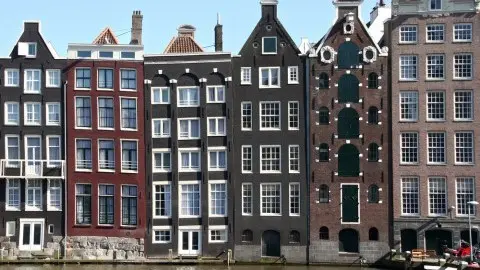VoxEU: The world’s poor cannot protect themselves well from the novel coronavirus
Recommendations to limit the spread of Covid-19 call for social distancing, washing, and access to information and treatment. However, the poor are less likely to have the kind of dwellings and infrastructure to follow Wold Health Organisation's recommendations, writes Caitlin Brown, Martin Ravallion, Dominique van de Walle for VoxEU.
Informal sector workers are particularly vulnerable
The World Health Organization and numerous national governments have made detailed recommendations on how people can best protect themselves from the new coronavirus.1 The prevailing recommendations have four main elements:
- Learning: A fundamental requirement is to be able to receive reliable information on local disease incidence and protection measures. Compliance with this recommendation requires access to communication tools: radio, TV, phone, the internet.
- Isolating: Social distancing (including lockdown as its extreme form) to lower the reproduction rate of the virus by reducing contacts per day. This requires both a personal behavioural response and suitable home-infrastructure. A dwelling with walls, a roof, and closures is desirable. In settings with large (often extended) families, intra-household transmission becomes more important; a sufficiently low density of people in the dwelling is advantageous. And there must be certain facilities: for example, you can’t isolate as effectively if you have to leave the dwelling or yard to go to the toilet.
- Washing: Regular handwashing with soap and water is strongly emphasised for protection from the virus. This too requires suitable facilities within the residence.
- Treatment: If key symptoms (fever, difficulty breathing) develop, seeking medical help is advised. This requires physical access to health-care facilities.
The belief that these non-pharmaceutical measures can help contain the spread of illness is consistent with the available evidence. However, virtually all of these recommendations require household environments that support the capacity to protect from the virus – what we call the ‘home environment for protection’.
The home environment for protection is the result of past wealth-constrained choices, and these are unlikely to change quickly. Dwelling attributes such as size, construction, and location (determining access to treatment) cannot be easily adjusted in response to the immediate virus threat; nor is health all that people care about when allocating their resources. All of the aspects of the home environment for protection are likely to be affected by wealth, meaning that poorer households have less capacity to follow WHO recommendations. This is to be expected between countries as well as within them.
Exacerbating matters are the likely behavioural responses to the WHO recommendations. Even if following all the recommendations is feasible given the dwelling and possessions, being poor in terms of income or wealth can be expected to reduce people’s capacity to survive in isolation for anything more than a short period (as discussed further in Ravallion 2020).
For informal-sector workers in countries with limited social protection, staying home is likely to entail a potentially devastating loss of income. There is evidence that people in poorer regions reduced their mobility for work and other activities less than those in wealthier regions (Bargain and Aminjonov 2020). Poverty diminishes an individual’s capacity to isolate and hence protect their family from the virus.
Thus, there is both a direct wealth effect on the capacity to socially isolate and an indirect effect via the attributes of the home environment that allow individuals to follow the recommendations for protection. Social protection policies responding to the pandemic focus primarily on the direct effect, by aiming to support consumption (especially of food) of the particularly needy while in isolation (Gentilini et al. 2020).
So what do we know about the indirect effect?
A key quote from the article:
The developing world, and especially its poorest half, is ill-prepared to protect itself from this virus. The recommendations that have been implemented on a massive scale in the rich world must be considered near fiction for the world’s poor. Given the virus’s infection rate, the likely degree of exposure among a large segment of the population of the developing world also points to a serious concern for the entire population.
If poor families have a low health environment for protection, then complementary policies will be needed to help protect the poor from the virus. While challenges in supporting the food system as well as cash and food transfers have been emphasised in recent policy discussions, inadequate home environment for protection cannot be ignored.
The housing stock cannot be changed rapidly. But some things can be done now. The current infrastructure for information (particularly mobile-phone coverage) holds promise for getting out public health messages and information on how to access consumption support. Policies such as distributing or subsidising sturdy face masks, soap, and improved water access could be feasible in the near term and justified by both external benefits and equity impact. Home-grown innovative adaptations to the realities of life in the developing world will be crucial.
The full original article first appeared on VoxEU here on 27 June 2020
This publication has been prepared by ING solely for information purposes irrespective of a particular user's means, financial situation or investment objectives. The information does not constitute investment recommendation, and nor is it investment, legal or tax advice or an offer or solicitation to purchase or sell any financial instrument. Read more
Download
Download opinion
9 July 2020
New Horizons Hub: the changing nature of capitalism after Covid-19 This bundle contains 5 Articles